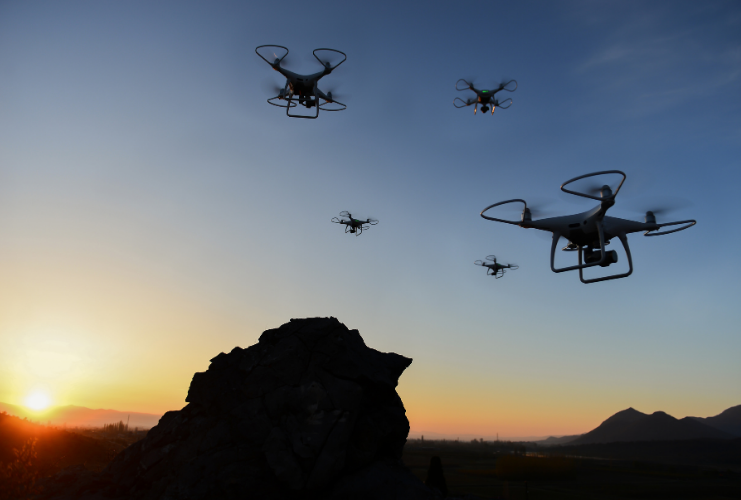In July 2017, a tiny commercial drone boarded the UK’s biggest and most advanced warship.
The pilot, an amateur photographer, was amazed when he landed the £300 drone onto the deck of the Queen Elizabeth while it was docked. “I could have carried two kilos of Semtex and left it on the deck," he explained.
Thankfully, he didn’t. Although, he was able to take a photograph from the drone and take off again without being challenged. The incident shows that as drones become more compact, advanced, and accessible to consumers, they pose a growing security risk to military bases.
Of course, there are plenty of radar systems designed to identify and track airborne threats. But not all of them can detect an ever smaller and more sophisticated class of consumer drone.
Three Major Shortcomings of Standard Radar Systems
Drones are too small for them
Radar systems detect objects by emitting radio waves in short pulses. If this signal hits an object, it bounces back to the radar antenna. The radar then amplifies the reflected signal to find out how big the object is, and how fast it’s moving.
Traditional radar technology is very good at picking up objects with a large radar cross-section (RCS), like manned long-distance aircraft. But it can struggle to detect increasingly miniaturised commercial drones, many of which have the RCS the size of a bird.
They can’t tell drones apart from birds
Even if a traditional radar system can detect very small objects, most only tell you that an object is there, not what it is. A target with the RCS of a bird could easily be confused with an actual bird.
Drone detection radars that can’t automatically classify whether an object is a bird or a drone could cause confusion and waste time. When bird strikes pose their own unique risks to military aircraft, being able to quickly identify whether you’re dealing with a bird or a drone is critical.
They can’t track multiple fast-moving targets
Unlike the manned aircraft that most radars are designed to detect, drones are controlled remotely. This means they can fly evasively or erratically at varying speeds, even in harsh weather like fog or storms, making them much harder to detect.
Drones are also capable of flying in huge swarms. An impressive 3,051 is the current Guinness World Record for most unmanned aerial vehicles airborne simultaneously – but even a swarm of 100 could risk overwhelming a military base. Most radars simply can’t keep track of that many fast-moving small targets at the same time.

What Kind of Drone Detection Radar Will Keep Your Airspace Secure?
When traditional radar is no longer effective, what should you expect from a modern radar solution?
Evidently, you need a drone detection radar that can identify and track small, fast-moving objects. But that alone isn’t enough. You need a system that can:
- Work in low-visibility conditions
- Detect and track multiple targets simultaneously
- Differentiate drones from other moving objects, including birds
- Integrate with other technologies, to confirm and gather detailed information quickly
Micro-doppler radar is the key piece of technology that makes this possible. Unlike traditional radar, micro-doppler radar can detect different movement speeds inside moving objects. A drone’s propellers move at a very different speed to a bird’s wings. The micro-doppler radar uses this to detect drones and distinguish them from birds.
When you integrate micro-doppler radar with other technologies, such as cameras and security systems, you have a powerful drone detection system that will give you early warning of incoming threats.
The Future of Radar Technology
The photographer that infiltrated the Queen Elizabeth wasn’t acting with malicious intent. He was just curious. But operators can easily adapt and use commercial drones for hostile purposes, from unauthorised surveillance to acts of terrorism.
For example, in 2018, Russian air and naval bases were attacked by a swarm of miniature drones armed with explosives. Military chiefs couldn’t identify who was behind the attacks. Eric Pahon, a spokesperson for the US Department of Defence, explained that these “deadly” systems are “widely available, easy to control, and certainly do not require significant technical expertise.”
Drones are only becoming easier to access and harder to detect. Traditional radar simply isn't enough to keep air bases secure. That’s why more modern systems, purpose-built with an evolving threat in mind, will shape the future of radar technology. They are and will continue to play a pivotal role in protecting military airspaces in the years to come.

